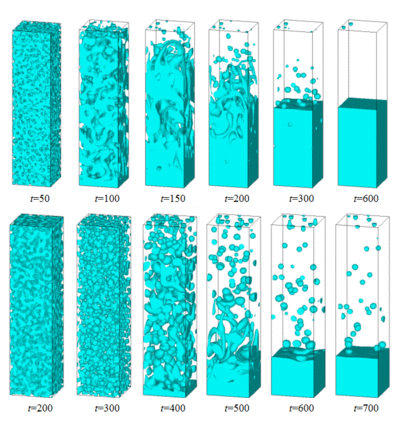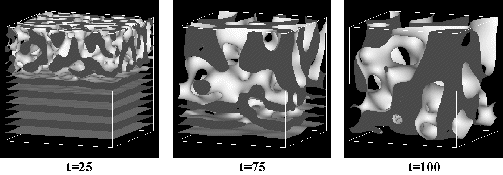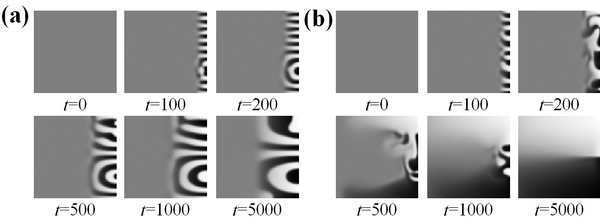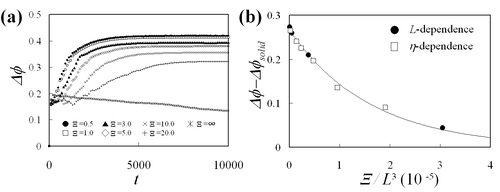

We numerically study the effect of gravity-driven hydrodynamic flow on phase separation of binary fluid mixtures. Our simulations propose a new parameter relevant to the pattern evolution. It is given by the averaged mean curvature \(\bar{\kappa}\) of the interface and is related to the Young-Laplace pressure. \(\bar{\kappa}\) depends on the volume symmetry importantly: In an off-critical mixture, \(\bar{\kappa}^{-1}\) is similar to the droplet size of the minority phase. When \(\bar{\kappa}^{-1}\) grows larger than the capillary length, the gravity deforms the droplet shape and changes the coarsening process. In a critical mixture, on the other hand, \(\bar{\kappa}\) is nearly zero. There, the bicontinuous pattern is intrinsically unstable against the bulk force, so that it starts to be elongated along the field just after the sharp interfaces appear.

We demonstrate the first three-dimensional simulations of bicontinuous spinodal decomposition of incompressible binary fluid mixtures in a confined geometry. We find that after an initial transient the thickness of a wetting layer \(L\) grows with time \(t\) as \(L \sim t^{1/3}\) by a diffusion process and later as \(L\sim t\) by a hydrodynamic one. We confirm that the hydrodynamic pumping of fluid via bicontinuous tubes plays dominant roles in the late-stage thickening dynamics of a wetting layer. A domain connected to the wetting layer grows faster than in bulk, which is suggestive of the hydrodynamic origin of the fast-mode kinetics found by Wiltzius and Cumming.

We report that phase separation of a fluid mixture, whose temperature is set below the phase separation temperature only locally near one side wall of the container, is strongly delocalized over the entire system if there is density mismatch between the components. We demonstrate that this delocalization is caused by i) gravity-driven convective flow and ii) asymmetric kinetics between fast hydrodynamic coarsening during demixing and slow diffusional mixing through the phase boundary. The relevant physical parameters determining the efficiency of phase separation are clarified.

